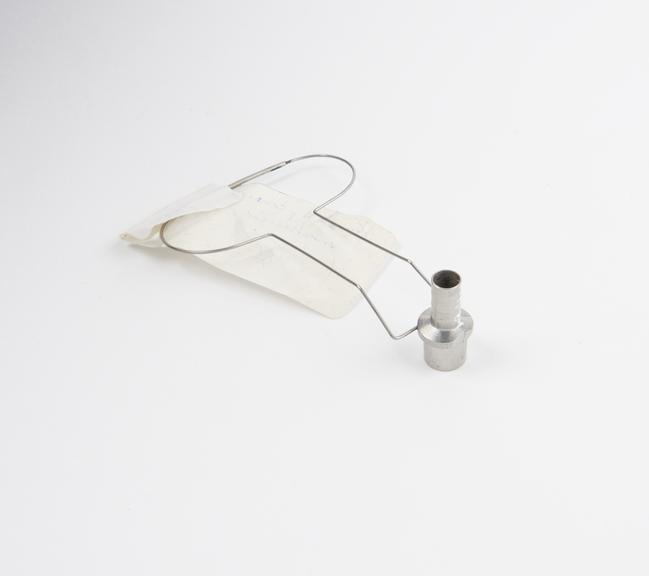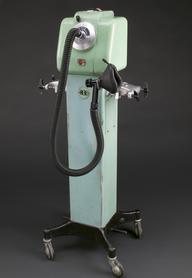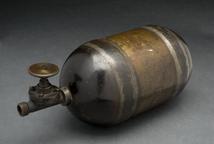

Tunstall endotracheal connector
- Made:
- 1970-1990

Tunstall type endotracheal connector, no maker marked, 1970-1990
In 1966 Mike E Tunstall (1928-2011), an anaesthetist developed this connector to help secure a tube placed in the windpipe through a person’s nose, mouth or throat. The connector bridged the tube to a ventilator or breathing device. The tube is placed on the metal cylinder before being put into the patient’s mouth or nose. The wire frame, which can easily route and swivel is then attached to the patient’s face with padding underneath. This connector was developed for the use with the youngest patients, newborns and premature babies. The connector means it is easier to remove from a ventilator to clean or allow the patient to change position and give access to veins, particularly on the scalp. The first connectors were made by the Department of Medical Physicals at the University of Aberdeen.
Tunstall was key in developing techniques for neonatal intensive care and developed Entonox – a combination of oxygen and nitrous oxide, used during childbirth.
Details
- Category:
- Anaesthesiology
- Object Number:
- 1999-801
- Materials:
- metal (unknown)
- Measurements:
-
overall: 25 x 55 mm
- type:
- endotracheal tube
- credit:
- Gilston, Alan




